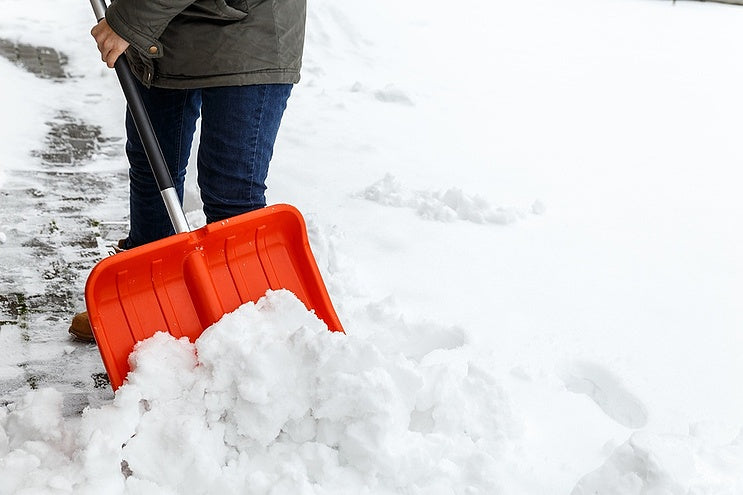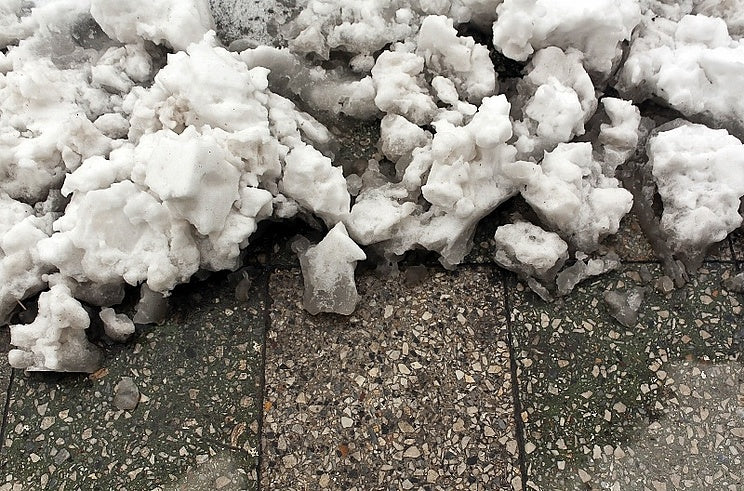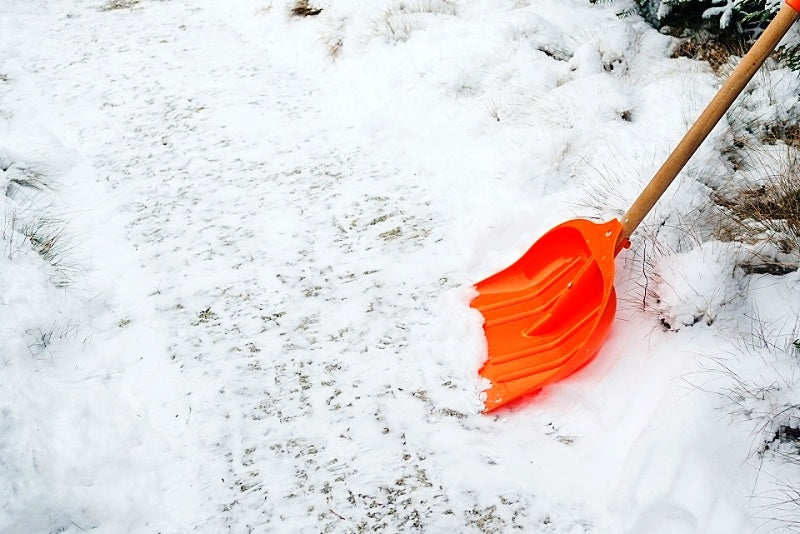
Is snow accumulating on your property? If so, it’s time to get out there and start shoveling.
Allowing snow to pile up on or around your home can cause an array of problems. These might include a deck warping and splintering due to melting snow, potential roof damage due to water leaking under shingles or, worse, a collapsed roof. And, of course, there are slip-and-fall safety concerns associated with ice buildup under accumulating snow drifts.
Breaking out the snow shovel may seem like the natural solution to these types of problems. However, shoveling can cause damage to your property. Here are six things to consider before you get too far into the next snow-shoveling session.
Six areas of your property that can be damaged by snow-shoveling
The Deck
Winter can wreak havoc on a deck and, as a homeowner, you may be concerned with issues such as popped nails, graying due to lack of proper sealant, or rotting boards. However, getting out the shovel may not be the best solution for preventing these.
Shoveling snow may actually damage your deck by leaving gouges or scrapes that, come spring, end up costing money to repair. Wood is also particularly vulnerable to damage from shoveling when it’s been softened by melting snow.
The Driveway
Driveways are the most common priority for shoveling when the snow begins to fall. But shoveling your driveway with any kind of force and a metal shovel (the type most commonly used) can scratch the surface of an asphalt or concrete driveway. With each additional snowfall and shoveling session, your driveway surface can potentially become more and more damaged, both in integrity and appearance.
The Roof
According to the City of Boston, one cubic foot of dry snow weighs about seven pounds while wet snow can weigh anywhere between 12 and 18 pounds. The majority of roofs are made to withstand this added weight, however, the risk of structural damage still remains, particularly with large, flat roofs.
While it may seem like a good idea to avoid the massive headache a collapsed roof could cause, getting up there and shoveling could cause serious damage to shingles or other roofing materials. A better alternative is to “shave” the snow down to a couple of inches and then use a snow rake to remove snow and ice from the eaves and as far up the roof as you can reach with the rake.
Landscape
Snow accumulation on the lawn is inevitable during the snow season. But, letting it pile up can stress the grass hidden beneath and could result in a fungal infection. Keeping your landscape free from excessive snow piles will give it a better chance of flourishing once spring returns.
However as with shoveling the driveway, shoveling snow around your property can become a “brute force” activity. It’s easy to accidentally remove chunks of sod or damage plants while you’re focused on the task of keeping snow drifts under control.
Walkways
When it comes to safe and easy access to your home during the winter months, walkways must remain clear of snow and ice. However, like driveways, walkways can become cracked, scraped or gouged as a result of shoveling—even those made of brick, pavers or decorative stamped concrete.
Irrigation and Wiring
Lastly, many homeowners make their spring and summer watering easier by using drip irrigation, which places drip pipes on or below the surface of the soil. Likewise, wiring for lighting around decks, patios, and yards is buried but over time can move closer to the ground surface. When your property is blanketed in snow it’s often difficult to remember exactly where everything is.
It doesn’t take much force with the blade of a snow shovel to sever irrigation lines or wiring. In a few short seconds, an entirely new spring project can be created by a misplaced shovel blade or by accidentally shoveling too deeply.
Alternatives to Shoveling
There are alternatives to shoveling snow, thus avoiding potential damage to your home and property. Some of these include:
- Chemical de-icers and salt
- Snow blowers
- Hiring professional snow removal services
- Heated driveways
- Heated snow melting mats
Whether it’s shoveling or one of the alternative approaches to snow and ice removal, it’s important to choose the method that’s right for you. Your home, property, and wallet will thank you.


